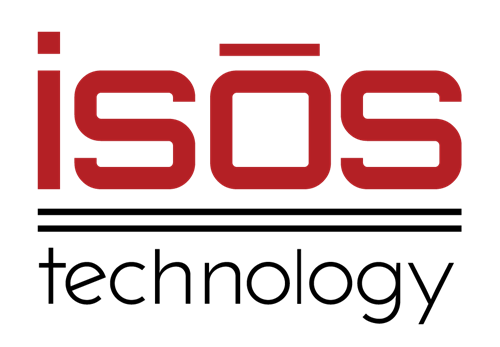 Jira is a powerful solution for streamlining operations in Fortune 1000 companies. Imagine having a centralized platform that seamlessly tracks tasks, fosters collaboration, and supports Agile methodologies. The potential for enhanced efficiency and productivity is undeniable.
Jira is a powerful solution for streamlining operations in Fortune 1000 companies. Imagine having a centralized platform that seamlessly tracks tasks, fosters collaboration, and supports Agile methodologies. The potential for enhanced efficiency and productivity is undeniable.
As you explore how Jira can transform your company's operations, you'll uncover possibilities waiting to be harnessed.
Key takeaways
- Jira centralizes tasks & communication.
- Enhances collaboration & real-time insights.
- Improves accountability & transparency.
- Supports Agile methodologies like Scrum.
- Offers customizable workflows & analytics.
Introduction
Navigating project management within Fortune 1000 companies is complex, but Jira's powerful features can simplify and streamline your operations.
Jira is a versatile project management tool that efficiently streamlines the organization's tracks and manages complex IT infrastructure projects within large organizations, including Fortune 1000 companies.
With Jira, you can create detailed project plans, assign tasks to team members, set deadlines, and monitor real-time progress. Its intuitive interface makes it easy to collaborate with colleagues, share important documents, and communicate effectively.
Understanding the need for streamlined operations
To streamline operations effectively, you must address common challenges such as communication breakdowns, resource allocation inefficiencies, and project progress-tracking difficulties.
Utilizing robust project management tools like Jira is essential for enhancing team collaboration, gaining real-time insights, and improving accountability and transparency in your projects.
Challenges faced by project management leads
Managing the complexities of project management in Fortune 1000 companies often presents challenges for leads. These include communication breakdowns, resource allocation inefficiencies, and difficulty tracking project progress, which can hinder overall efficiency and success.
Enterprise software like Jira can help alleviate these challenges by providing a centralized task-tracking and communication platform.
Communication breakdowns often arise due to the many team members involved in projects within large companies. Enterprise software like Jira can establish clear communication channels, ensuring all team members are on the same page.
Resource allocation inefficiencies can be addressed through better visibility and planning tools offered by project management software. By utilizing task-tracking features, leads can allocate resources more effectively, preventing bottlenecks and optimizing project workflows.
Difficulty in tracking project progress is a common issue faced by project management leads. Jira's real-time reporting capabilities enable leads to monitor progress at a glance, helping them make informed decisions and keep projects on track.
Importance of practical project management tools
Enhancing collaboration across teams is a crucial aspect of practical project management tools that streamline operations in Fortune 1000 companies.
By utilizing advanced project management tools, such as Jira, companies can foster seamless communication and cooperation among team members.
These tools provide a centralized platform on which team members can collaborate in real-time, share updates, assign tasks, and track progress effortlessly.
Enhanced collaboration boosts productivity and guarantees all team members are on the same page regarding project goals and timelines.
Project management tools offer real-time insights and reporting that allow quick decision-making based on accurate data, leading to more efficient project execution.
Additionally, these tools improve accountability by clearly defining roles and responsibilities, thus enhancing transparency throughout the project lifecycle.
In today's fast-paced business environment, practical project management tools are essential for Fortune 1000 companies looking to streamline operations, drive innovation, and stay ahead of the competition.
By prioritizing collaboration across teams and leveraging the power of advanced project management tools, companies can achieve tremendous success and quickly realize their strategic objectives.
Why choose Jira for project management?
Jira stands out for its intuitive user interface when considering project management tools. It offers a dashboard that's easy to navigate and customizable to suit your preferences.
In addition, Jira provides extensive project tracking capabilities, supports Agile methodologies like Scrum and Kanban, and offers advanced features for task management and integration with version control systems and CI/CD workflows.
These key points make Jira a reliable choice for Fortune 1000 companies looking to streamline their operations efficiently.
Intuitive user interface
With Jira's user-friendly dashboard and customizable navigation, Fortune 1000 companies can effectively streamline their operations, making it a top choice for project management.
Jira's intuitive user interface simplifies the process of tracking tasks and projects, allowing users to easily navigate through different sections and access necessary information swiftly. The dashboard provides a centralized hub where team members can view project progress, assigned tasks, and upcoming deadlines at a glance.
Jira customization options enable users to tailor their interface based on individual preferences, such as adjusting layouts, adding specific widgets, or setting up personalized notifications. By offering a seamless user experience and empowering individuals to adapt the platform to suit their needs, Jira enhances productivity and collaboration within large enterprises.
Whether you prefer a minimalist layout or a more detailed overview, Jira's customization features ensure that your project management experience aligns perfectly with your workflow.
Comprehensive project tracking
By supporting Agile methodologies like Scrum and Kanban, Jira offers advanced features for thorough project tracking, making it a preferred choice for efficient task management in Fortune 1000 companies. When utilizing Jira for project tracking, you benefit from the following:
- Agile methodology support: Jira integrates with Agile methodologies such as Scrum and Kanban, allowing teams to manage tasks effectively in sprints or continuous flow.
- Workflow automation: With Jira, you can automate repetitive tasks, streamline processes, and promote efficient collaboration among team members.
- Advanced task management: Jira provides a diverse set of tools for task creation, assignment, tracking, and monitoring progress, facilitating better project organization.
- Integration capabilities: Jira easily integrates with version control systems and CI/CD workflows, fostering seamless collaboration and deployment processes within your project management framework.
Through these features, Jira empowers Fortune 1000 companies to track projects effectively, adapt to changing requirements, and improve overall operational efficiency.
Key features of Jira that boost efficiency
Jira offers holistic workflows and automation features to tailor processes to your company's unique requirements and reduce repetitive tasks.
Its robust reporting and analytics capabilities provide detailed insights for performance evaluation and strategic decision-making.
Additionally, Jira seamlessly integrates with other popular tools like Confluence, Trello, and Slack, offering a complete solution for enhanced productivity and collaboration.
Custom workflows and automation
Tailoring workflows to align with your organization's needs and leveraging automation rules are key strategies for enhancing operational efficiency within Fortune 1000 companies.
When utilizing Jira for custom workflows and automation, consider the following:
- Custom workflows: Design workflows tailored to your organization's unique requirements, aligning them with the software development lifecycle for peak efficiency.
- Automation rules: Implement automation rules to reduce manual, repetitive tasks and streamline processes, allowing your team to focus on high-value activities.
- Integration capabilities: Seamlessly integrate Jira with other tools and systems to create a cohesive workflow environment that boosts productivity.
- Continuous improvement: Regularly review and refine your workflows and automation rules to adapt to changing business needs and ensure ongoing operational enhancement.
Reporting and analytics capabilities
Utilizing powerful reporting and analytics capabilities in Jira enhances operational efficiency by providing detailed insights for performance measurement through customizable dashboards. Jira's robust reporting and analytics features allow you to track key performance indicators, monitor progress, and identify areas for improvement with precision.
Customizing dashboards to display relevant metrics and trends can help you gain tailored insights that drive informed decision-making and strategic planning.
With Jira's reporting tools, you can quickly generate thorough reports on project status, team productivity, issue resolution times, and more. These reports can be shared across teams, facilitating transparent communication and alignment towards common goals.
The customizable dashboards enable you to visualize data in a way that suits your preferences, making it easier to spot patterns, anomalies, and opportunities for optimization.
Integration with other tools
Enhancing efficiency within Fortune 1000 companies, Jira's compatibility with popular tools like Confluence, Trello, and Slack streamlines operations through seamless integration capabilities. This integration with other tools allows for a cohesive work environment where information flows effortlessly, and tasks are managed efficiently.
Here's how Jira's compatibility with these collaboration tools can benefit your organization:
- Confluence: Seamlessly link Jira issues to Confluence pages for enhanced project documentation and knowledge sharing.
- Trello: Sync tasks between Jira and Trello boards to guarantee alignment across teams and projects.
- Slack: Receive real-time updates from Jira within Slack channels, keeping everyone informed and enhancing communication.
- API availability: Leverage Jira's API for bespoke integrations with custom tools or software tailored to your business needs.
With Jira's robust integration capabilities, your company can optimize workflows, improve collaboration, and drive productivity to new heights.
Tips for implementing Jira in your organization
When implementing Jira in your organization, plan and strategize to assess your project management needs and involve key stakeholders for successful adoption.
Guarantee that adequate training resources are available for users and provide ongoing support to foster a sense of community engagement.
Measure success by tracking key performance indicators post-implementation, and be open to adjusting processes based on feedback to improve efficiency continually.
Planning and strategy
How can you effectively assess your project management needs and engage stakeholders in adopting Jira?
To guarantee a smooth shift and maximize the benefits of implementing Jira, follow these steps:
- Evaluate your current business processes: Conduct a thorough analysis of your existing workflows to identify areas for improvement and opportunities for business process optimization.
- Define project management requirements: Clearly outline your organization's needs to align them effectively with Jira's capabilities.
- Engage stakeholders early: Involve key stakeholders from different departments in the decision-making process to gather input, address concerns, and ensure buy-in for the Jira implementation.
- Provide training opportunities: Offer training sessions and resources to familiarize users with Jira's features, promoting successful adoption and utilization within your organization.
Training and support
To guarantee the successful implementation of Jira in your organization, prioritize offering extensive resources for user training and establishing avenues for ongoing support and community engagement.
Providing thorough training materials and sessions is vital to streamlining your operations in Jira Service Management. Ensure your employees can access tutorials, guides, and hands-on workshops to familiarize themselves with the platform's functionalities.
Additionally, it is essential to set up a support system for addressing queries and challenges post-implementation. Encourage active participation in community forums or user groups, where insights, best practices, and troubleshooting tips are shared.
Measuring success
To successfully implement and optimize Jira in your organization, focus on establishing key performance indicators to track post-implementation progress and prioritize adjusting processes based on feedback for continuous improvement.
Tracking these indicators is essential for measuring success and ensuring that Jira is effectively streamlining operations within your Fortune 1000 company.
Here are four key performance indicators to keep in mind for measuring success and driving continuous improvement:
- User adoption rate: Monitor how quickly and extensively employees embrace Jira for their daily tasks.
- Issue resolution time: Measure the speed at which issues are identified, assigned, and resolved within Jira.
- Customer satisfaction score: Gather user feedback to assess their satisfaction levels with Jira's performance.
- Process efficiency: Evaluate how Jira has improved operational workflows and streamlined organizational processes.
Addressing common misconceptions about Jira
You might think Jira is only for software development, but it has broad applicability across various departments, such as HR and marketing.
The complexity of usage is often a misconception, but with clarifications on the learning curve and available resources, quick adoption success stories show its effectiveness.
Don't let common misconceptions hold you back from exploring the full potential of Jira in streamlining operations within your organization.
Jira is only for software development
Many organizations mistakenly believe that Jira is solely for software development, overlooking its broad applicability across various departments such as HR and marketing. By exploring the in-depth analysis of Jira's capabilities, you can streamline your operations effectively in Jira.
Here are some ways different departments can benefit from Jira:
- Human Resources (HR): Utilize Jira for recruitment processes, onboarding new employees, and tracking employee performance reviews.
- Marketing: Manage marketing campaigns, track project timelines, and collaborate on creative assets using Jira's customizable workflows.
- Finance: Streamline budgeting processes, track expenses, and monitor financial performance seamlessly within Jira.
- Operations: Improve efficiency in supply chain management, monitor inventory levels, and streamline procurement processes using Jira's customizable features.
With its versatility and customizable features, Jira can be a valuable tool for various departments beyond IT, enhancing collaboration and efficiency across the organization.
Complexity of usage
Understanding the complexity of Jira's usage involves clarifying the learning curve and available resources for successful adoption.
The learning curve for Jira can vary depending on your team's familiarity with project management tools. However, with the proper training and resources, many users can quickly adapt to Jira's interface and functionalities.
To facilitate quick adoption, Atlassian, the company behind Jira, provides extensive documentation, tutorials, and customer support to help users navigate the platform effectively.
Many Fortune 1000 companies have shared success stories of implementing Jira seamlessly across multiple departments, highlighting the platform's versatility and ease of use. By investing time in understanding Jira's features and leveraging the available resources, companies have streamlined their operations and achieved significant improvements in productivity and collaboration.
Embracing the learning curve and taking advantage of available support can lead to successful adoption and enhanced organizational efficiency.
Why Jira is the key to streamlining project management in Fortune 1000 companies
The benefits of using Jira as a project management tool for streamlining operations in Fortune 1000 companies are evident and compelling. If you're a project management lead looking to streamline your operations in Jira, here's why you should consider this powerful tool:
- Efficient Task Management: Jira offers a user-friendly interface that allows you to easily assign, track, and prioritize tasks, ensuring smooth workflow management.
- Real-Time Collaboration: With Jira, teams can collaborate in real time, share updates, and communicate seamlessly, fostering better teamwork and decision-making.
- Customizable Workflows: Tailor Jira to fit your company's specific needs by creating custom workflows that align with your processes, enhancing efficiency and productivity.
- Comprehensive Reporting: Gain valuable insights into project progress, team performance, and resource allocation through Jira's robust reporting features, enabling data-driven decision-making.
Sign up to receive more great content
Learn more about Atlassian and how Isos can help by signing up to receive our latest blogs, eBooks, whitepapers and more.













